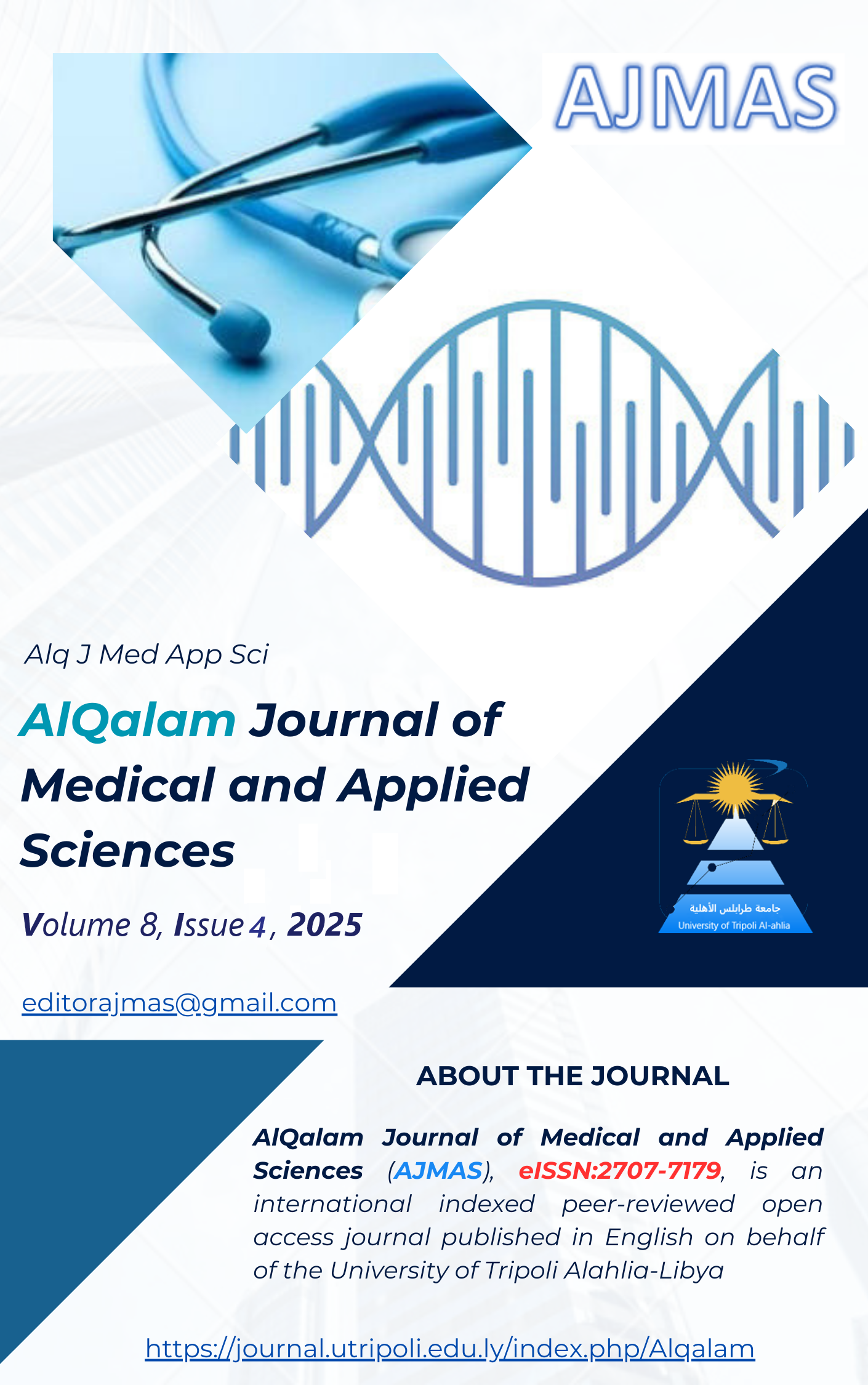The detection of Heavy Metal Concentrations by Inductively Coupled Plasma (ICP) in Libyan Cocoa Samples and Associated Health Risk Assessment
DOI:
https://doi.org/10.54361/ajmas.258435Keywords:
Heavy metals, ICP-MS, Cocoa, Libya.Abstract
Cocoa (Theobroma cacao L.) is one of the most widely consumed agricultural products worldwide, used in the production of chocolate and various beverages. Despite its nutritional and health-promoting properties, concerns have arisen due to contamination with heavy metals such as cadmium (Cd), chromium (Cr), copper (Cu), zinc (Zn), and aluminum (Al), which may pose health risks. In this study, ten cocoa samples from local markets in Derna, Libya, were analyzed using Inductively Coupled Plasma Mass Spectrometry (ICP-MS) to determine heavy metal concentrations. Results revealed elevated levels of Cd (7.06 µg/g), Cr (10.97 µg/g), and Cu (10.62 µg/g), all significantly above the permissible Maximum Residue Limits (MRLs), while Zn and Al also exceeded safety thresholds. Risk assessment showed a Target Hazard Quotient (THQ) of 1.17 for Cd, indicating potential health hazards, and a Hazard Index (HI) of 1.49, suggesting cumulative non-carcinogenic risks from chronic exposure. These findings highlight the importance of continuous monitoring and strict regulation of cocoa products to minimize public health risks associated with heavy metal contamination.
Downloads
Published
How to Cite
Issue
Section
License
Copyright (c) 2025 Hamad Hasan, Amaal Yousuf, Marwa Khalifa, Monira Saleh

This work is licensed under a Creative Commons Attribution 4.0 International License.















